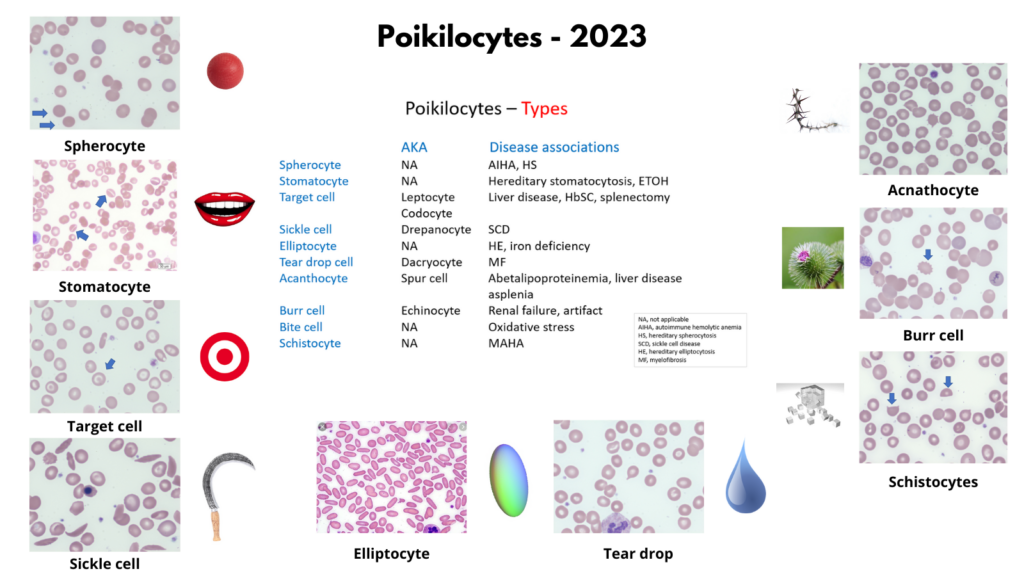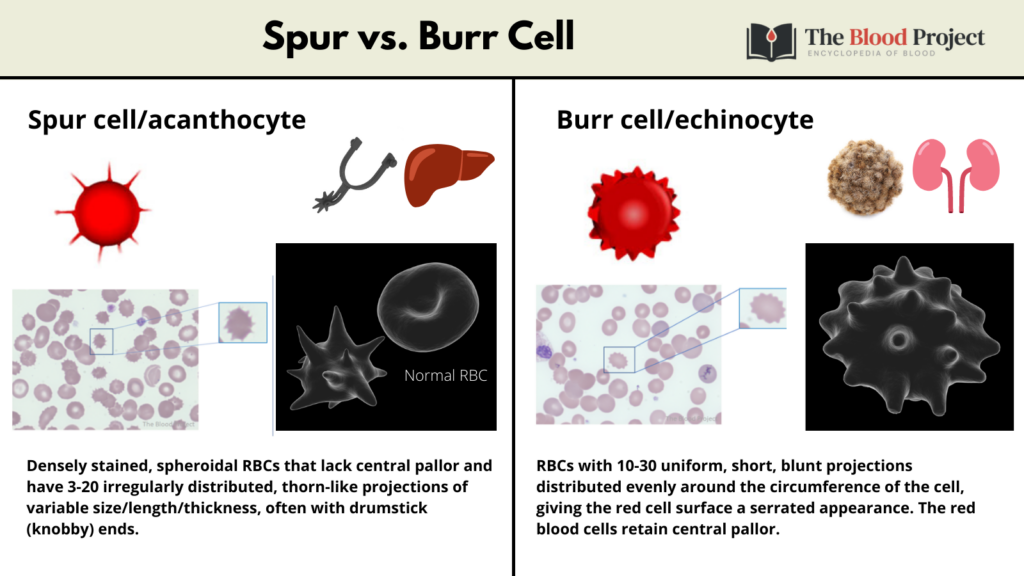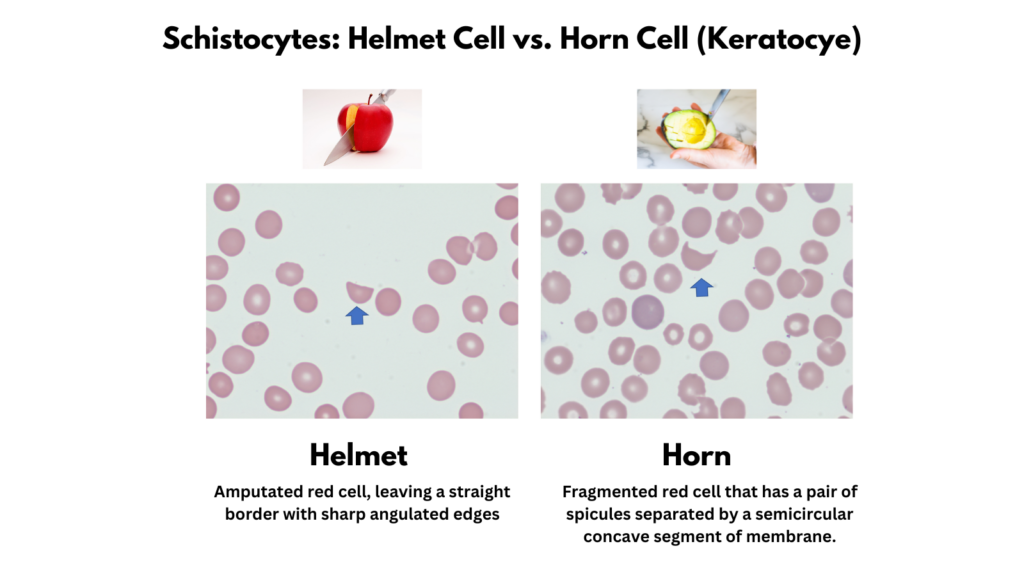Poikilocytes
Prev
1 / 0 Next
Prev
1 / 0 Next
Introduction
- The term poikilocyte is a generic or umbrella term to describe erythrocytes with abnormal shape.
- Poikilocytosis is the presence of an increased number of abnormally shaped red blood cells.
- Poikilocytes can be subclassified according to specific shape changes, some of which have fairly unique diagnostic significance, while other forms are quite non-specific.
- Wherever possible, the red blood cell shape should be identified specifically, e.g. acanthocyte, keratocytes, echinocytes, and the generic term of poikilocytosis or poikilocytes should be avoided.
- However, in some situations, there are so many red blood cell shapes or there are some shapes that defy description that the generic term poikilocytosis suffices and provides the same information as identifying each red blood cell shape individually.

| Poikilocyte | Features | Associated disease |
|---|---|---|
| Acanthocyte (spur cell) | 3-20 spicules: variable length, sharp or knobby spicule ends, unevenly spaced; no central pallor | Abetalipoproteinemia, liver disease, asplenia, starvation |
| Echinocyte (burr cell) | 10-30 spicules, short length, blunt ends, evenly distributed; central pallor present | Artifact (crenated RBC), uremia |
| Teardrop cell | Teardrop or pear shape with a single blunted or rounded end/tail | Myelofibrosis, myelophthisic anemia, thalassemia |
| Sickle cell (drepanocyte) | Think sickle or crescent shaped RBCs with 2 pointed ends; may also be boat shaped or holly-leaf shaped; dense cytoplasm (no central pallor) | Sickle cell disease |
| Helmet cell (schistocyte) | Single amputated zone highlighted by a straight border, with sharp angulated edges; lack central pallor | Microangiopathic hemolytic anemia |
| Horn cell (keratocyte; schistocyte) | Pair of spicules separated by a semicircular concave segment of membrane; lack central pallor | Microangiopathic hemolytic anemia |
| Other schistocytes | Includes triangles, crescents, microspherocytes; lack central pallor | Microangiopathic hemolytic anemia |
| Elliptocyte | Elongated RBC in which sides are parallel and long axis > 2x short axis; round ends with polarization of hemoglobinization | Hereditary elliptocytosis |
| Ovalocyte | Elongate RBC in which sides are parallel and long axis < 2x short axis; round ends with polarization of hemoglobinization | Hereditary ovalocytosis |
| Pencil cell | Hypochromic variants of elliptocytes having long axes at least triple the length of the cell’s short axis | Hereditary elliptocytosis and severe iron deficiency. |
| Spherocyte | Round, spherical slightly microcytic cell with lack of central pallor | Hereditary spherocytosis, warm autoimmune hemolytic anemia |
| Stomatocyte | Round RBC with central pallor that appears slit-like, straight, fish mouth or curved rod shaped | Hereditary stomatocytosis, acute alcoholism |
| Target cell | Round, increased surface area: volume ratio results in central darker hemoglobinized region within the area of central pallor | Iron deficiency anemia, liver disease, thalassemia, asplenia |
| Bite cell | More than one “bite” may be present in a red cell. Small bites are termed nibbles; larger bites apple core cells. | G6PD deficiency, drug-induced oxidant hemolysis |


Prev
1 / 0 Next
